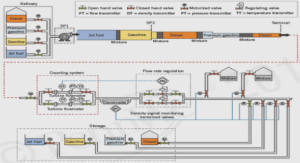Rafamantanana et al. / Journal of Pharmaceutical and Biomedical Analysis
Determination of extraction efficiency
One gram of dried and powdered leaves was extracted as described in Fig. 2. The leaves were first extracted for 1 h. The residue was recuperated and extracted again with fresh solvent for 1 h. This was repeated until the exhaustion of leaves in dicentrine. Each extract obtained after each extraction was evaporated to dryness separately and fractionated. The alkaloidic fraction was injected separately onto HPLC column. The kinetics of the extraction was established by monitoring the peak area of dicentrine.
Method validation
Selectivity, response function, trueness, precision (repeatability and intermediate precision), accuracy, linearity, range, limits of detection (LOD) and quantification (LOQ) were the criteria determined to validate the method [20,24,25]. The validation of the method was done during three days to evaluate time-dependant intermediate precision. Data were analyzed with e-noval V3.0 software (Arlenda, Liège, Belgium).
Calibration standards
Stock solution of 1 mg/ml of dicentrine was prepared in methanol. This solution was diluted and four concentration levels (10, 25, 50 and 75 g/ml) were used to establish the calibration curve. Each level ofthe calibration standards was analyzed in duplicate.
Validation standards
Validationstandards wereprepared withinmatrix. Driedextract of leaves was diluted in 40 ml of methanol. This solution was spiked to reach final validation standards at 10, 25, 50, and 75 g/ml of dicentrine. Each level of the validation standards was analyzed independently in triplicates. 4. Results and discussion 4.1. Experimental design The first step is to verify the validity of the model for each response. In total, 13 peaks were identified as aporphine alkaloids in the total alkaloid extract. As depicted in Fig. 3a, the adequacy between the experimental retention times and the predicted ones is good. The adjusted coefficients of determination (R2 adj) are summarized in Table Furthermore, the corresponding residuals were normally distributed for most compounds – for each response pvalues were >0.05; (p-values for log(ktR) are presented in Table 4) – and mainly located into the interval [−2,2] minutes (Fig. 3b). Despite the high number of interactions added in the model (see Eq. (1)), a curved tendency can be observed on the residuals in Fig. 3b. It suggests that some terms of higher orders (e.g. pH3) could have been added in the model to avoid this slight lack of fit situation. Additionally, the heteroscedasticity of the residuals distribution in Fig. 3b highlights the need to perform the logarithmic transformation used to predict log(ktR). Indeed, the p-value computed on the modeled response (log(ktR)) were acceptable (>0.05; see Table 4) for 10 of the 13 compounds suggesting that the models were suitable for the optimization of the separation. Then, once the responses are correctly modeled, the error can be propagated from them to the separation criterion S. This step is carried out to estimate the prediction error affecting S and to give confidence in predicted optima. Thus, the predicted criterion was computed over the whole experimental domain using a grid search approach. Moreover, the probability to reach the criterion thresholdS > 0 min was also computedfrom2000MonteCarlo simulations over each point of this grid [10–12]. Fig. 4 displays the probability surfaces to at least reach a complete separation for each studied parameters: P(S > 0 min). The optimal separation was predicted at pH 3.0 with a gradient starting at 32% of methanol and whose slope was 0.42%/min. In Fig. 4, the DS is hedged in by a red line. The DS corresponds to a probability of 14% to get a complete separation. This quality level may seem low, but in the light of the residuals range (between −2 and +2 min) all compounds should be separated at the optimal operating conditions. This low quality level and the small DS size also suggest that the method will not be very robust. However, as depicted in Fig. 5b, the chromatogram recorded at the above mentioned optimal operating condition allows the complete separation of all the investigated compounds and is in accordance to the predicted chromatogram (Fig. 5a). The use of DoE and DS allowed separating of 13 compounds with UV and MS spectra indicating that they possess an aporphine skeleton, among them dicentrine, a positional isomer of dicentrine and neolitsine. Other compounds (isocorydine and glaucine) were identified by the comparison oftheir mass spectrum with literature and with our database [26]. 4.2. Extraction efficiency The kinetic of the extracted amount of dicentrine (Fig. 6) showed thattotal extraction was observed after four 1 h extractions (area = 0). An extraction efficiency of 99.61 ± 0.01% (n = 3) was then obtained. For all experiments, four 1 h extractions using each time fresh solvent were applied.




